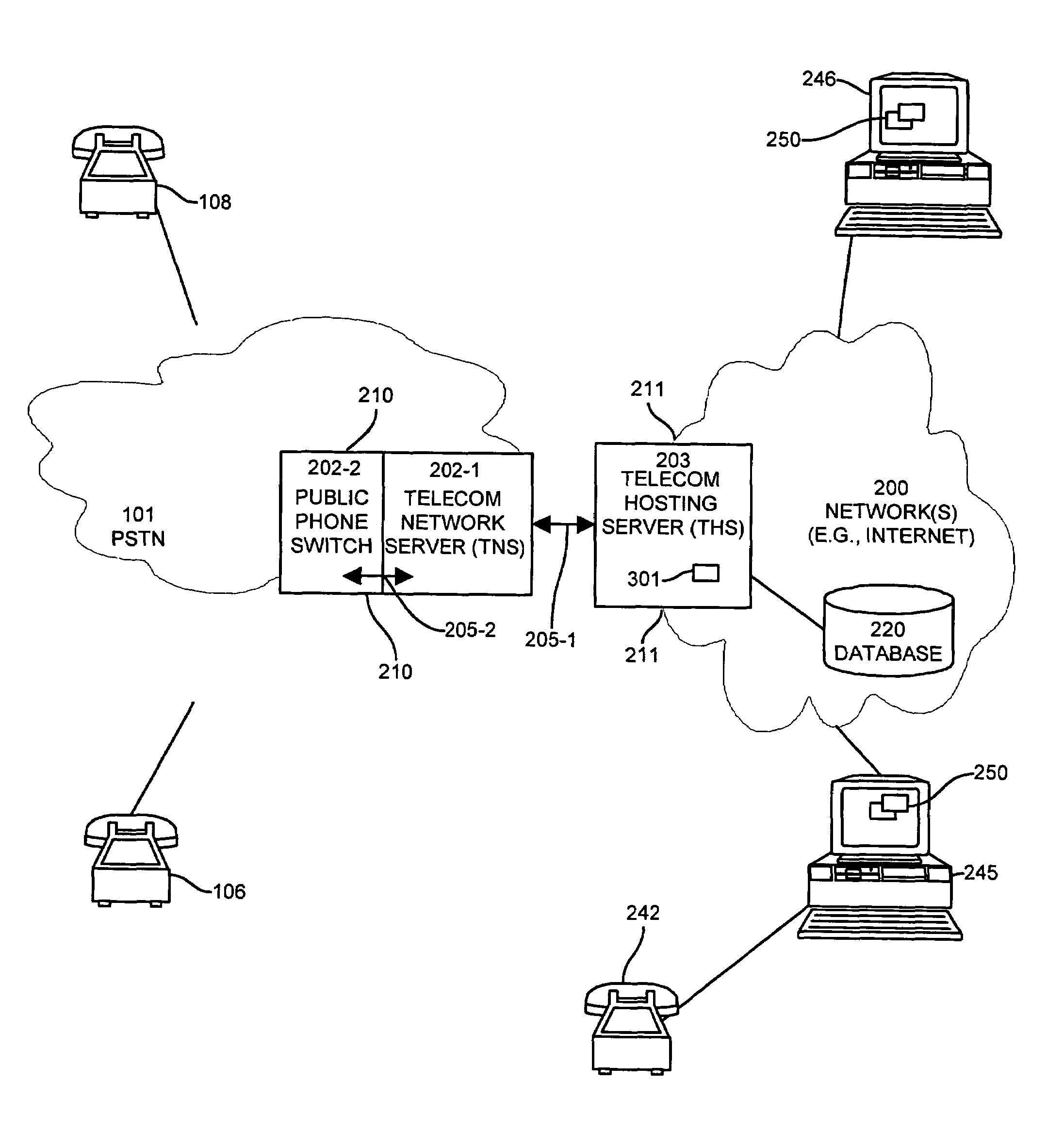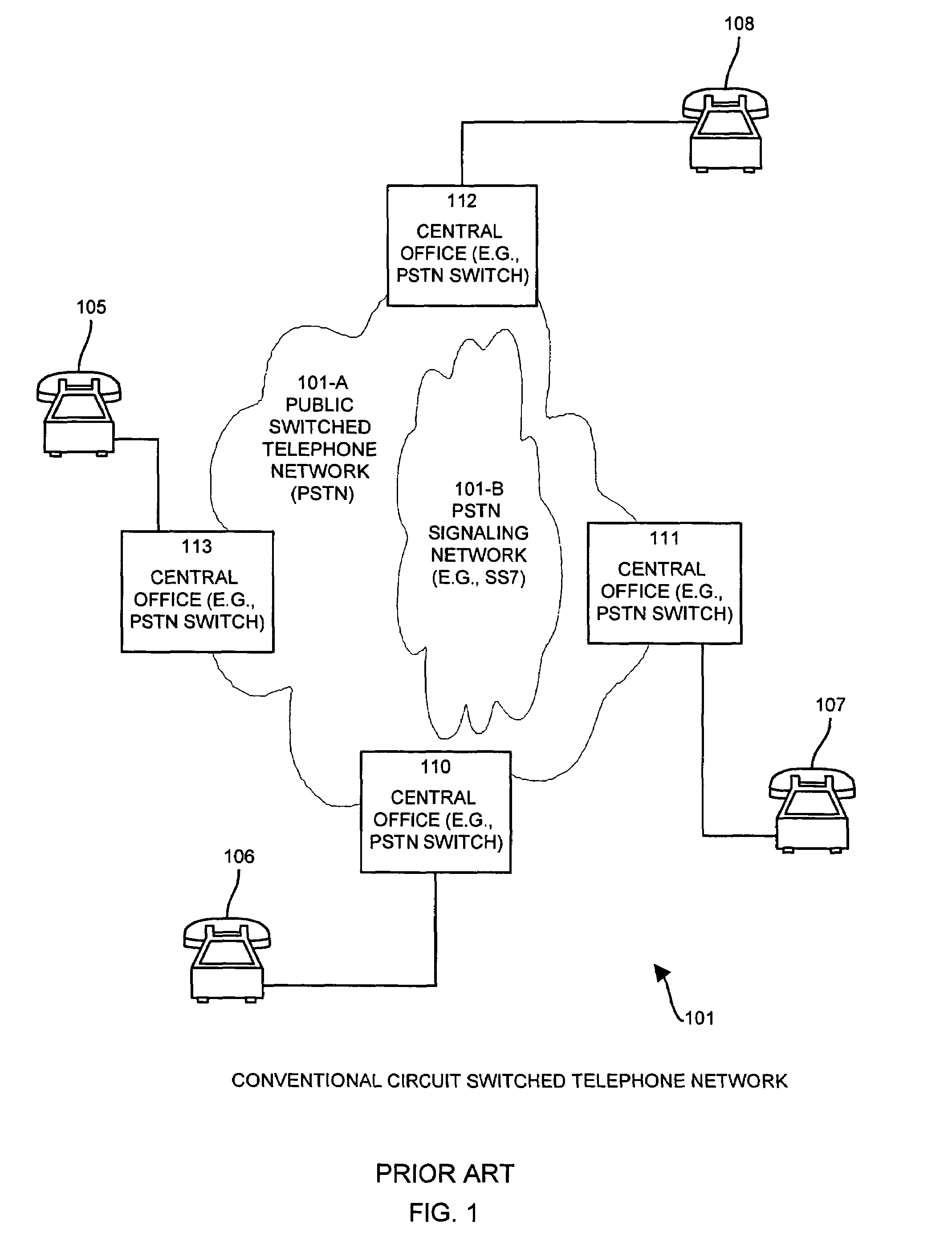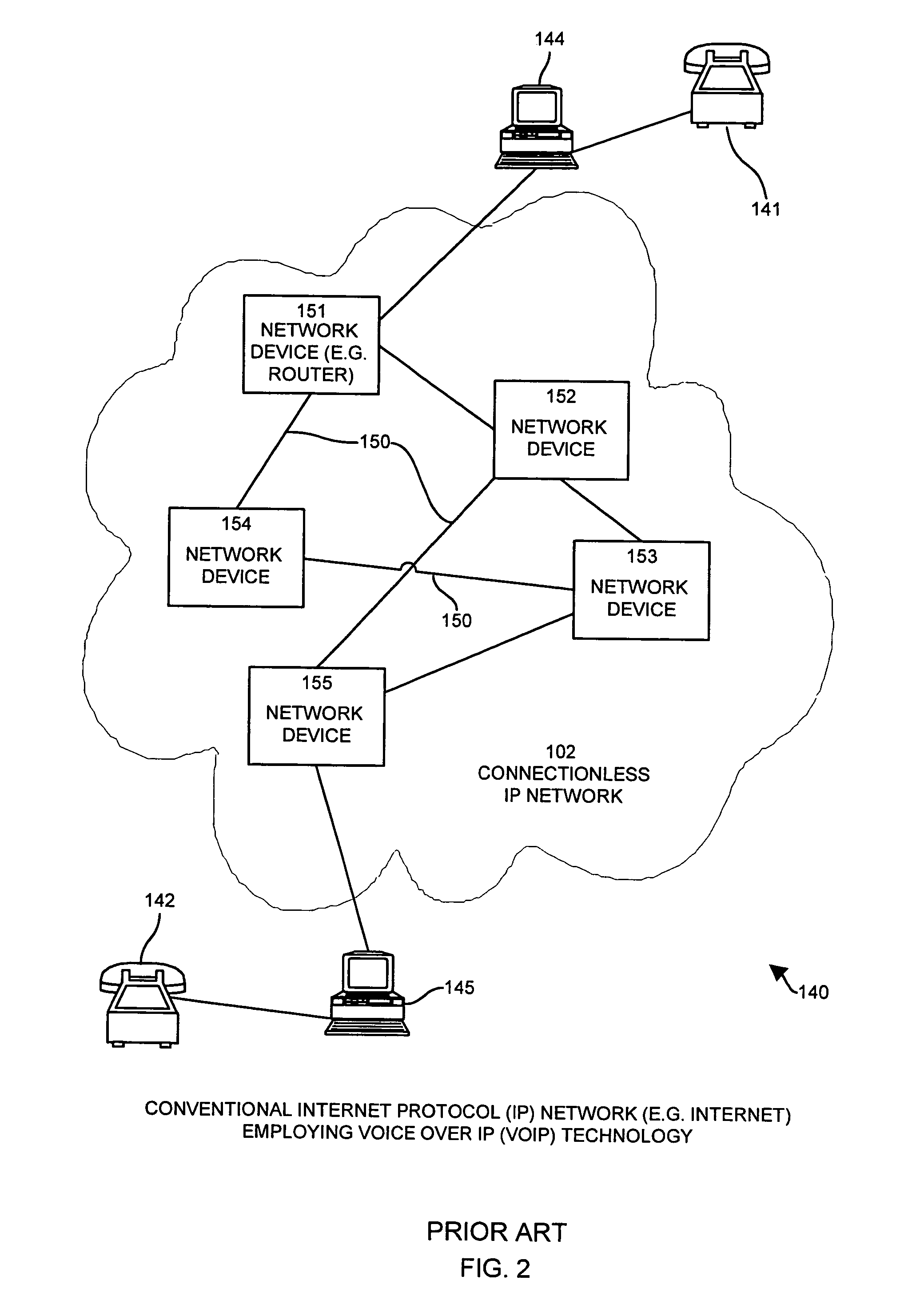Methods and apparatus for providing communications services between connectionless and connection-oriented networks
a technology of communication services and oriented networks, applied in the field of communication technologies, can solve the problems of reducing the capabilities and services offered in the public and private telecommunications systems, public systems alone lack the ability to develop and deploy advanced calling services, and public systems suffer in various degrees
- Summary
- Abstract
- Description
- Claims
- Application Information
AI Technical Summary
Benefits of technology
Problems solved by technology
Method used
Image
Examples
Embodiment Construction
[0117]As summarized above, the invention provides a unique telecommunications system that uses software applications called user agents, that are preferably Internet-based and that operate on behalf of users in a telecommunications hosting server to control call connections under control of a telecommunications network server that interfaces with the telecommunications hosting server as well as a connection-based public telephone network. The telecommunications hosting server operates on a computer network on behalf of the user agents to provide call signaling in support of many advanced calling and telecommunications services as will be explained. The functionality and performance (e.g., execution) of the user agent(s) preferably takes place primarily within the telecommunications hosting server, though user client computers (to be explained) can provide some and possibly all of the user agent functionality, depending upon the particular implementation chosen. The telecommunication...
PUM
 Login to View More
Login to View More Abstract
Description
Claims
Application Information
 Login to View More
Login to View More - R&D
- Intellectual Property
- Life Sciences
- Materials
- Tech Scout
- Unparalleled Data Quality
- Higher Quality Content
- 60% Fewer Hallucinations
Browse by: Latest US Patents, China's latest patents, Technical Efficacy Thesaurus, Application Domain, Technology Topic, Popular Technical Reports.
© 2025 PatSnap. All rights reserved.Legal|Privacy policy|Modern Slavery Act Transparency Statement|Sitemap|About US| Contact US: help@patsnap.com



